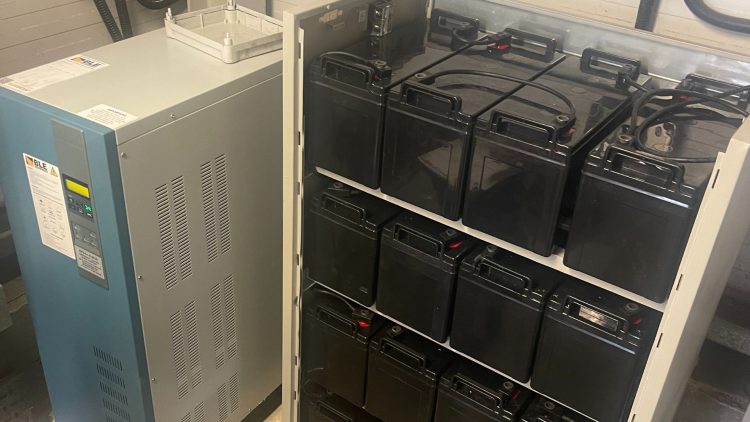
When it comes to ensuring uninterrupted power supply and reliable emergency lighting, it’s crucial to understand the distinct roles and functionalities of static inverters, Uninterruptible Power Supplies (UPS), and Central Battery Units (CBU). Each system has unique characteristics tailored to specific applications, and knowing these differences can help in making informed decisions for your emergency power needs.
Static Inverter
A static inverter, often used in emergency lighting systems, employs a double conversion topology. This process involves rectifying AC input to DC, then inverting it back to AC to supply the load at either 230V single phase or 415V three phase. Here are some key aspects of static inverters:
- Compliance with Standards: Static inverters for emergency lighting are designed in accordance with BS EN50171:2021. This standard ensures that the system meets stringent requirements for life safety applications.
- Battery Life: The batteries used in these systems typically have a 10-year service life, ensuring long-term reliability.
- Recharge Capabilities: The charger must be capable of recharging the batteries to 80% capacity within 12 hours and fully within 24 hours.
- Overload Capacity: The inverter can run at 120% of its rating continuously, providing robust performance even under demanding conditions.
- Fault Management: In the event of a short circuit or open circuit on the load circuit, the inverter, under mains fail conditions, has to be capable of clearing the fault and continuing to supply power to the remaining circuits. This capability is crucial and in compliance with BS EN50171:2021 as static inverters are considered life safety systems.
Uninterruptible Power Supply (UPS)
While the topology of a UPS is identical to that of a static inverter, there are significant differences in their design and application:
- Standard Compliance: Unlike static inverters, UPS systems are not required to conform to BS EN50171:2021.
- Battery Life: The batteries used in UPS systems generally have a design life of 5 years, with a service life of approximately 3 to 4 years.
- Recharge Time: UPS batteries can take up to 36 hours to fully recharge after discharge.
- Overload Capacity: There is no requirement for UPS systems to have overload capability.
- Modular Design: UPS systems are often modular, which means a higher component count and consequently a lower Mean Time Between Failures (MTBF).
- Fault Management: In the event of a downstream short circuit under mains failure conditions, a UPS will typically shut down to protect itself, unlike static inverters that must continue to supply power to unaffected circuits.
Central Battery Units (CBU)
Central Battery Units offer a different approach to emergency power, typically providing either 24V, 48V, or 110V output. They can have either maintained or non-maintained output, with the following characteristics:
- Output Voltage: Maintained output is usually AC voltage, while non-maintained output is DC voltage.
- Luminaire Compatibility: Using a CBU requires specific modifications to the luminaire to run on DC in the event of a mains failure. Additionally, the lumen output is reduced due to the ballast lumen factor.
Advantages of Static Inverters over CBUs
- Compatibility with Mains Luminaires: Any mains luminaire can be used with a static inverter in an emergency lighting scheme. The luminaire will provide full lumen output upon mains failure without requiring any modifications.
- Voltage Drop: Voltage drop on cable runs is less of an issue with static inverters compared to CBUs, as the voltage used is considerably greater which can suffer significant voltage drops over long cable runs.
In Summary
Choosing the right emergency power system – be it a static inverter, UPS, or CBU – depends on the specific requirements of your application. Static inverters offer robust performance, compliance with stringent safety standards, and greater compatibility with existing luminaires, making them an excellent choice for emergency lighting schemes. Understanding these differences ensures that you select the most suitable and reliable solution for your power back-up needs
